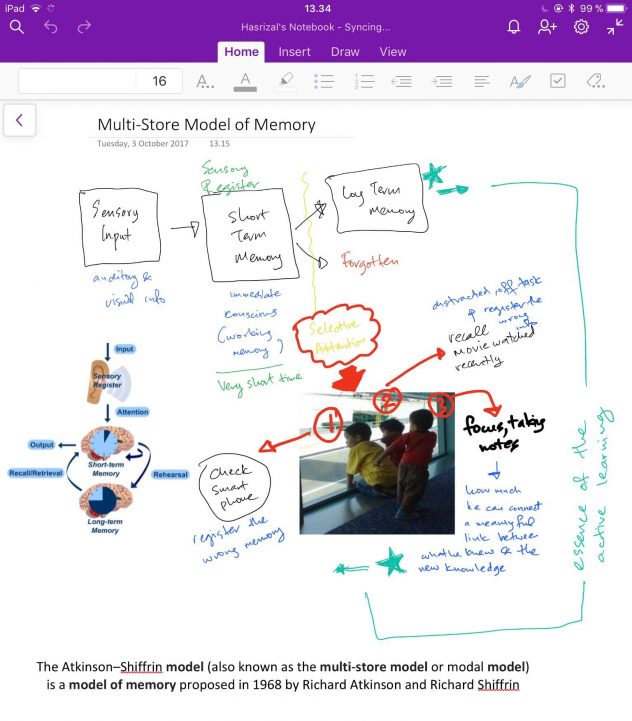
The Multi-Store Model of memory, referring to the The Atkinson–Shiffrin model, is very relevant at explaining how meaningful schooling to my students. Our objective is to produce lifelong learners, but students easily forget everything not just after finishing the schooling years, but even after examination. What is taught at school will hardly taken into real life and shape the society if the system is focusing on factual knowledge and learning takes place around what, when, who, where, with little attention given to why and how. It is hard to achieve the deep learning.
Understanding this model forced me to apply it when designing or modifying the learning plans for my students.
Before I begin to introduce new topics to the students, I will spend about 10 minutes with activities that will help the students to detect their previous knowledge and make it meaningful to them. For example, when I want to introduce the idea of ‘change’ in historical thinking, I show them a short video clip or an old photo of a place known to many and create a simple game to identify as many as possible, objects or landmarks they recognised from the photo. Later on, the photo will be compared with the recent photo of the same place.
So basically, we activate the students prior knowledge before using them to make meaningful connections with the new thing they will learn.
I was first made aware of this when reading Lee Jenkin’s “Permission To Forget, Tenth Anniversary Edition And Nine Other Root Causes of America’s Frustration with Education”.